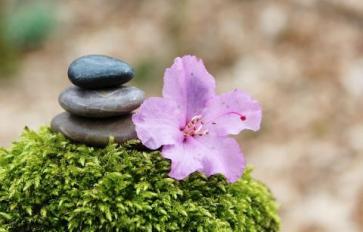
Often misconstrued as some mystical eastern technique kept only for yogis and sages, meditation is actually an extremely beneficial mindfulness practice every person can learn – from youngsters to centurions alike. It's never too late nor too early to start! In some schools it has been found that by implementing meditation instead of detention, kids grades and behavior are improving. Here is a simple meditation introduction for teens and pre-teens to assist them in becoming more balanced, clear and inspired in a world that is sometimes nothing short of crazy.
Transcript for the Meditation:
To begin, find a comfortable and reasonably quiet place to sit. If possible, sitting with the legs crossed helps to stretch particular veins in the sides of the legs, which supports the energy in the body to become still and calm, which is beneficial for meditation.
Next, let the hands rest on the knees or lower thighs in a way where the palms can be either open to the sky, or touch down to the legs. Neither is “better” per se, but each has a benefit in enhancing the meditation practice. Allow the first finger and thumb to gently touch one another, in what is called a “mudra” or gesture, which creates a sort of circuit of energy through the body, again – conducive to meditation. Feel and notice the gentle touch between thumbs and first finger.
With spine straight and body relaxed - a deep, calm breath is to be drawn into the lungs. Maintain awareness of the breath while doing so. Feel the air move through the nostrils of the nose, down the back of the throat, and fill the lung cavities. Feel the lungs full of air. In the same way, now notice the release of air from the lungs on the exhale breath. Consciousness should notice these things alone and let all other thoughts and memories cease. It may take multiple breaths to come into a state of only becoming aware of the breath. That is perfect and fine. Continue and even count the breath in this way: “Number 1- I am breathing in, Number 1 - I am breathing out. Number 2 - I am breathing in, Number 2 - I am breathing out.” And so forth.
After spending several minutes following and even counting the breath, the mind should be fairly well cleared and prepared for deeper contemplation, which is the next step toward meditation.
In this space, simply begin to feel and notice the space inside the mind and body with closed eyes. Become comfortable peering into the warm and friendly darkness within. In this quiet, still place, become aware of any images that come to mind, any symbols, words or memories. When we become still, we are more easily able to hear into the space where we can receive inspiration and promptings. Notice any images or sounds. Take note of the thoughts with your mind.
This is the space in which to listen; to receive any messages.
By holding awareness on the breath, and in the dark space behind closed eyes you are able to hear the messages and inspirations that are being offered you through the subtle vibrations of life and from the Universe/God.
Sit as long as you are able to while listening in the still. Each time your mind wanders away, just simply notice where it “went to” - what the content of that message was, without judgment, and then bring awareness back to the breath. Be mindful that there is a difference between engaging in negative/anxious thought patterns and receiving messages from your body and/or mind. Heed the messages from your intuition, but do not attach to your worries/fears/patterns of overthinking.
Notice again, your body in its comfortable seated position. Feel hands touching the legs or knees.
Listen to the sounds around you and in the distance.
With the next couple of breaths, start to wiggle your fingers and toes and move the head from side to side. You are preparing to come out of your meditation/contemplation. As you are ready, open the eyes.
Sit still for a few moments and remember any words, symbols or messages. If possible, write them down, while they are fresh.
This concludes the transcript for a simple meditation practice, applicable for teens and pre-teens or anyone who is just learning to meditate. Meditation practice is a fantastic way to calm the mind and allow in messages from beyond the mundane and beyond the logical mind. This is where Spirit communicates best with us.
As a teenager, meditation helps, especially, to balance the hemispheres of the brain, bringing hormones into balance and easing any difficulties associated with puberty. If you have teens, or you are a teen, I sincerely hope you find the time to practice or share this practice with someone you love. The proof is in the pudding!



